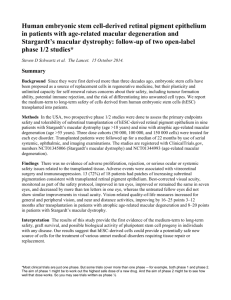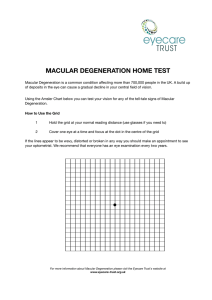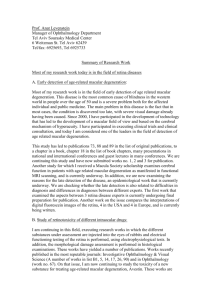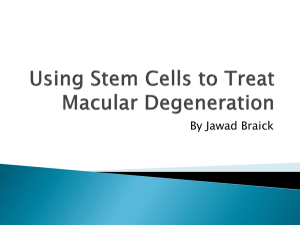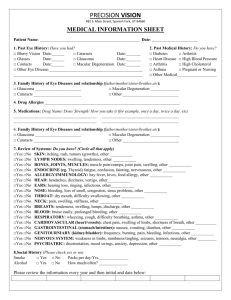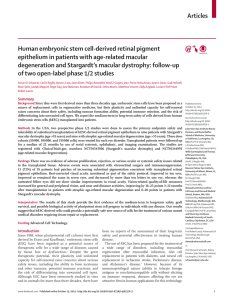Clinical & Research Updates Stem Cell Transplantation for
advertisement
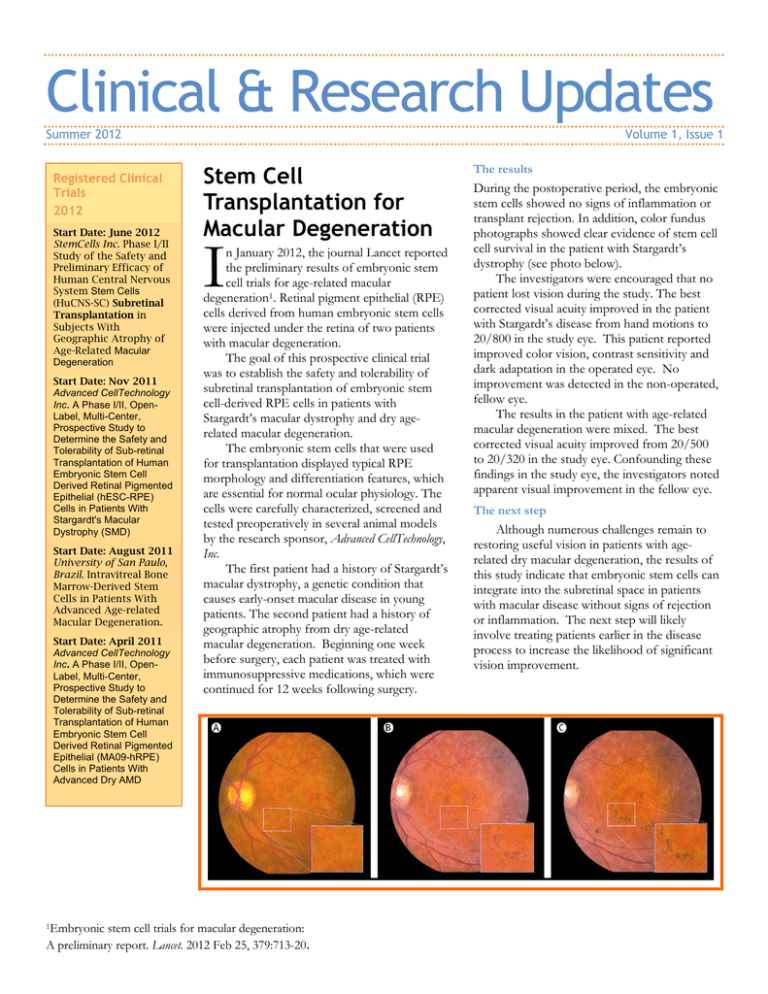
Clinical & Research Updates Summer 2012 Registered Clinical Trials 2012 Start Date: June 2012 StemCells Inc. Phase I/II Study of the Safety and Preliminary Efficacy of Human Central Nervous System Stem Cells (HuCNS-SC) Subretinal Transplantation in Subjects With Geographic Atrophy of Age-Related Macular Degeneration Start Date: Nov 2011 Advanced CellTechnology Inc. A Phase I/II, OpenLabel, Multi-Center, Prospective Study to Determine the Safety and Tolerability of Sub-retinal Transplantation of Human Embryonic Stem Cell Derived Retinal Pigmented Epithelial (hESC-RPE) Cells in Patients With Stargardt's Macular Dystrophy (SMD) Start Date: August 2011 University of San Paulo, Brazil. Intravitreal Bone Marrow-Derived Stem Cells in Patients With Advanced Age-related Macular Degeneration. Start Date: April 2011 Advanced CellTechnology Inc. A Phase I/II, OpenLabel, Multi-Center, Prospective Study to Determine the Safety and Tolerability of Sub-retinal Transplantation of Human Embryonic Stem Cell Derived Retinal Pigmented Epithelial (MA09-hRPE) Cells in Patients With Advanced Dry AMD 1Embryonic Volume 1, Issue 1 Stem Cell Transplantation for Macular Degeneration I n January 2012, the journal Lancet reported the preliminary results of embryonic stem cell trials for age-related macular degeneration1. Retinal pigment epithelial (RPE) cells derived from human embryonic stem cells were injected under the retina of two patients with macular degeneration. The goal of this prospective clinical trial was to establish the safety and tolerability of subretinal transplantation of embryonic stem cell-derived RPE cells in patients with Stargardt’s macular dystrophy and dry agerelated macular degeneration. The embryonic stem cells that were used for transplantation displayed typical RPE morphology and differentiation features, which are essential for normal ocular physiology. The cells were carefully characterized, screened and tested preoperatively in several animal models by the research sponsor, Advanced CellTechnology, Inc. The first patient had a history of Stargardt’s macular dystrophy, a genetic condition that causes early-onset macular disease in young patients. The second patient had a history of geographic atrophy from dry age-related macular degeneration. Beginning one week before surgery, each patient was treated with immunosuppressive medications, which were continued for 12 weeks following surgery. stem cell trials for macular degeneration: A preliminary report. Lancet. 2012 Feb 25, 379:713-20. The results During the postoperative period, the embryonic stem cells showed no signs of inflammation or transplant rejection. In addition, color fundus photographs showed clear evidence of stem cell cell survival in the patient with Stargardt’s dystrophy (see photo below). The investigators were encouraged that no patient lost vision during the study. The best corrected visual acuity improved in the patient with Stargardt’s disease from hand motions to 20/800 in the study eye. This patient reported improved color vision, contrast sensitivity and dark adaptation in the operated eye. No improvement was detected in the non-operated, fellow eye. The results in the patient with age-related macular degeneration were mixed. The best corrected visual acuity improved from 20/500 to 20/320 in the study eye. Confounding these findings in the study eye, the investigators noted apparent visual improvement in the fellow eye. The next step Although numerous challenges remain to restoring useful vision in patients with agerelated dry macular degeneration, the results of this study indicate that embryonic stem cells can integrate into the subretinal space in patients with macular disease without signs of rejection or inflammation. The next step will likely involve treating patients earlier in the disease process to increase the likelihood of significant vision improvement.
